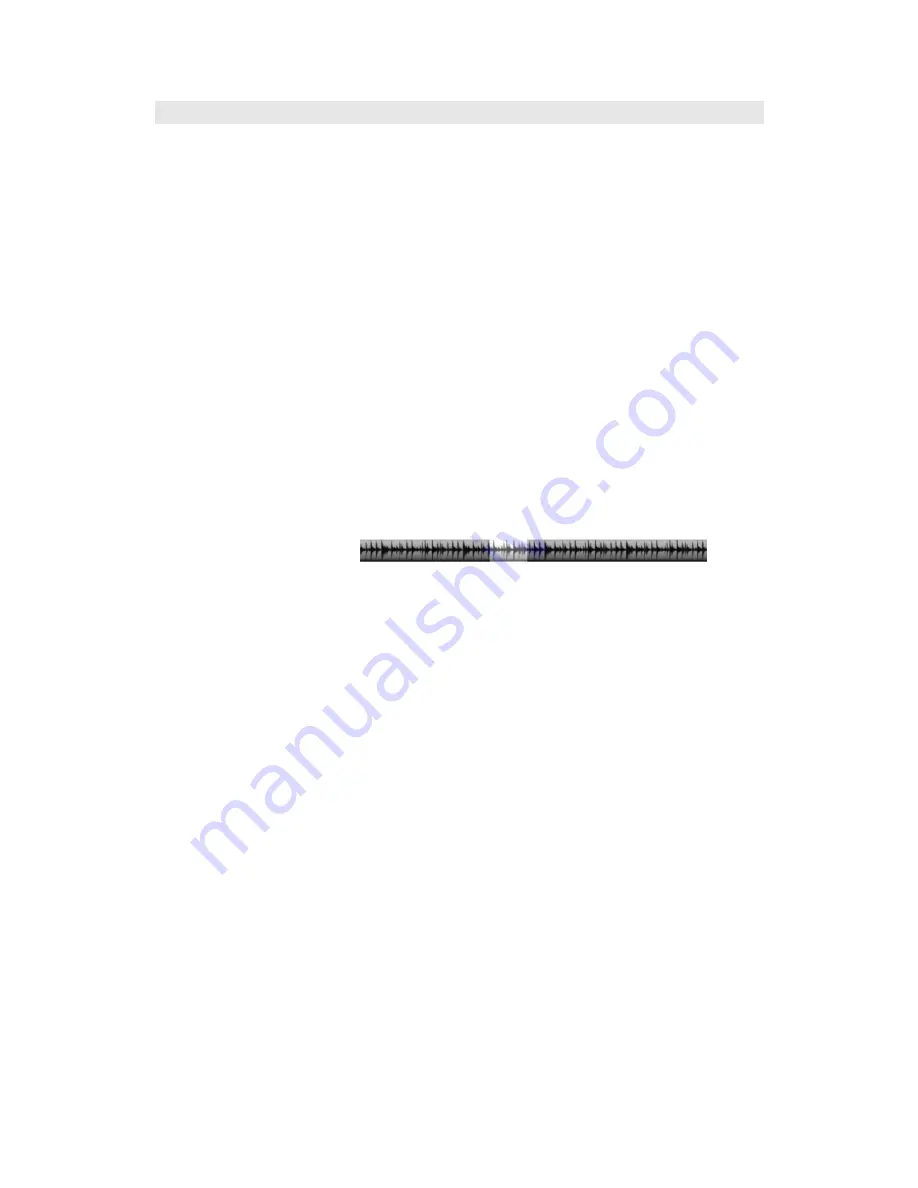
- 26 -
V.
The Play Modes (FX)
The Reflex has the ability to Sample, SOS, play, Echo, and sync, but the unusual PlayFX sample "capture" while
leaving the original sample proceed in the background won't be found on any other modular sampler.
PlayFX allows a sample to be "windowed" over, reversed, sped up/slowed down, enveloped, modulated or Granulized
(pitch-shifted, time-shifted) without affecting the playing RP sample or it's position in play in any way. This allows
one to jump into PlayFX then exit while the original sample keeps time as intended.
PlayFX loops can also be duplicated into a Slice, and saved for recall using SLICE SEL and related controls.
Because this can be done on-the-fly, it can become part of a performance seamlessly.
PlayFX can also capture a slice to apply playFX antics to.
*PlayFX is entered by simply tapping the PLAY button, or, if connected, tapping a footswitch, which incidentally
acts exactly as the button. In most cases it will capture the sample point at which it was pressed, so if PlayFX is in
Start/End or Position/Size modes and the Start knob is all the way down, then it may go unnoticed that PlayFX
has captured a sample and is now playing. This can be very advantageous for shortening a loop on-the-fly.
*Each time the PlayFX button is tapped, the Loop will restart from the same position the knobs ( and entry point )
dictate. This gives a simple one button restart of a sample section that has just played.
*If the Play LOOP LED is off ( LOOP button toggles it) then PlayFX will smoothly self exit at the Loop Point, but
saves the start position so repeated taps on the PLAY button will actuate from the same original place.
The LOOP LED will flash every second to indicate this "standby" condition. Hold PLAY or turn on LOOP to cancel.
*Holding the PlayFX button for longer than 1 second will exit and Reset PlayFX.
Each of the 3 PlayFX Modes are unique and useful.
A. The ST/END MiniLoop
The Start/End controls are the
most popular in any modular sampler that has "windowing" over a sample. The Start Knob (top right) sets the
beginning, or "loop-to" point of the loop, and the End knob (bottom right) sets the end of the loop, or "loop at"
point. While this isn't the best solution for panning over a sample (in my opinion) it does have the advantage of
being able to reverse a sample.
*Use the P.SEL button to select the ST LED if not already there
*Make sure the Play LOOP LED is toggled on
*Adjust the Start knob all the way to the left, and the End knob all the way to the right
*Get a RP sample playing ( maybe use infinite Echo ) to capture a PlayFX from.
*Press the PLAY button to enter PlayFX
You shouldn't have noticed much difference from the RP sample looping, but believe me, you are now in PlayFX!
Try adjusting the End control to half. You'll notice the Loop is now cut to half the size.
Try adjusting the Start knob. Notice that you can hear a mini-preview of the position PlayFX is starting at. This
makes it easier to find a specific point in a sample. If the End setting is lower that the Start, play will reverse.
Fine Setting:
If the sample is longer than 10 seconds, the Start/End controls become fairly coarse if you're trying find a
specific point in a sample (even though that knob is divided into 1000 sections). This is why there is Fine control.
*Select the lower point where you want to have Fine control from on the start knob, and upper point with the End
control. This will set your Fine range for knobs and/or ST/END CV inputs.
*While still in PlayFX (Green LED on) tap the P.SEL button to toggle to Fine mode.
Now the full range of the knobs is much smaller and will allow more precise adjustment.
Note: The fine mode may not work with a RP sample that was too small as it may end up "stuck" between sounds, or
just hardly move at all. If ZC Option (LED 2, see Addendum & pg.39) is off, then you will hear a waveform "buzz "
as there's not enough room for waveform to fully cycle. This can be a desirable effect for some!
Once you have a good sounding PlayFX loop, you can save it as a Slice by tapping the white SLICE button!
If there's more than one Slice, PlayFX can be used on that Slice to further modify it. See sect. VI. Slicing
Start and End positions can also, of course, be controlled by the Start/End CV inputs as a positive offset, which
means keeping the knobs lower (in non-Fine mode) will give the best range of control, but then that's up to you.






























